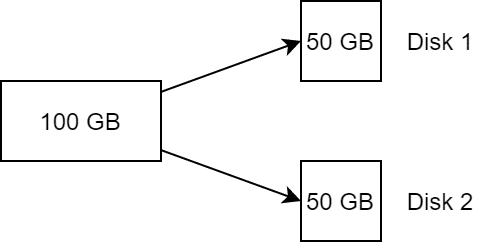This article is a result of questions that are asked frequently by my students in vSAN classes. The subject of striping sounds very simple at first, but it turns out to be quite complex once you start going away from the simple standard examples. We shed light on the striping behavior of vSAN objects in mirroring, erasure coding, and for large objects. We also show the different striping behavior before vSAN 7 Update 1 and after.
What is striping?
Striping generally refers to a technique in which logically sequential data is segmented in such a way that successive segments are stored on different physical storage devices. Striping does not create redundancy. In fact, the opposite is true. In traditional storage, striping is also referred to as RAID 0 (note: RAID 0 -> zero redundancy). By distributing the segments over several devices that can be accessed in parallel, the overall data throughput is increased while latency is reduced.
Stripe size or stripe width is the number of segments an object is split into.
With a stripe width of 2, an object of 100 GB, for example, is split into two components of 50 GB each and distributed across two storage devices. This corresponds to a RAID 0.

